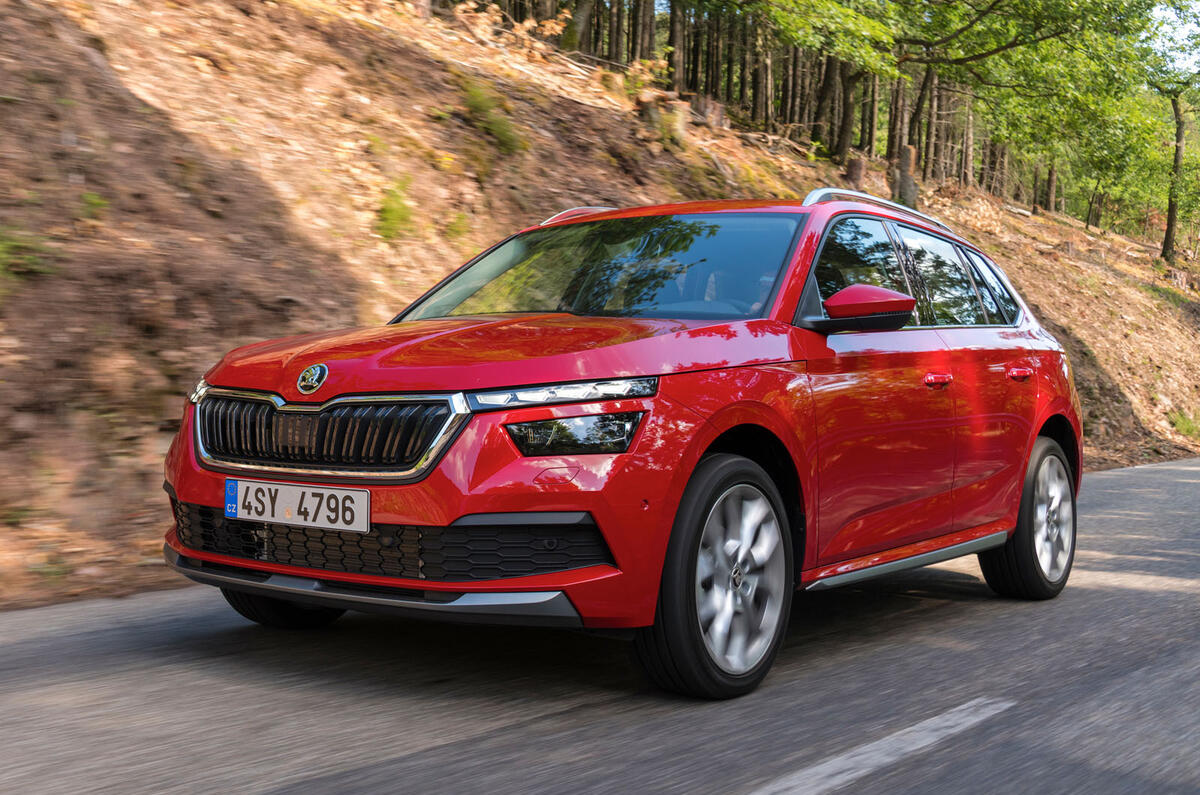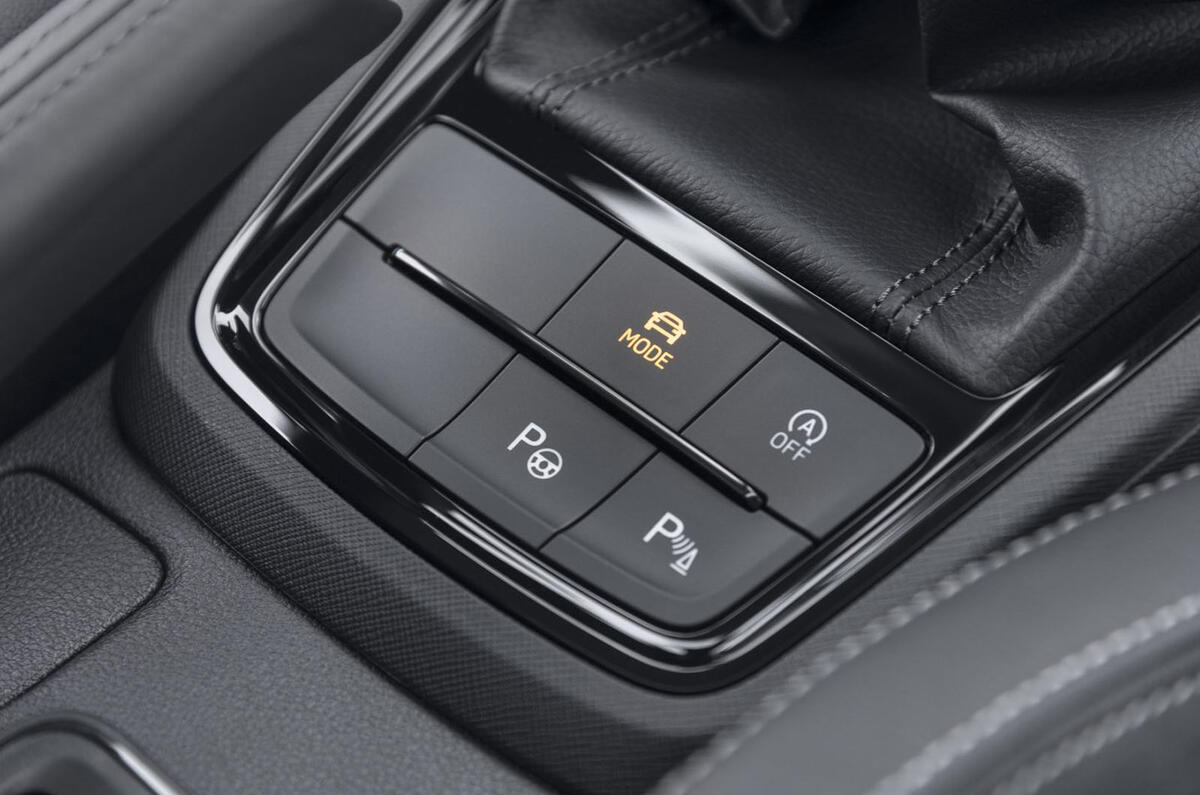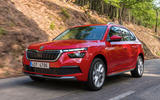This is the Skoda Kamiq: a compact crossover hatchback whose headlights are upside down. That might be the most daring and enigmatic thing about this new car, which is set to join bigger SUV-ish brothers the Karoq and Kodiaq in UK showrooms later this year.
On those two sibling cars, the dipped beam projectors sit just above the daytime running light strips as part of one combined unit. On the new Kamiq, though, the DRLs are above and the headlights themselves sit – separately, as it happens – just below. And this is what passes for ‘interesting’ on a compact Skoda in 2019: a design trick already pulled by the Citroën C3 Aircross and Hyundai Kona a year ago, for what it’s worth.
Remember those crazy, free-spirited types, the Skoda Roomster and Skoda Yeti? Well, someone has decided that smallish Skodas of their ilk must remain dead and buried, preferring smart but steady ‘Russian doll’ designs like the Kamiq. Skoda has decided, clearly, that while enthusiasts may have preferred more characterful cars, Average Joe Customer likes things more plain and conservative – and, no doubt, with good market research results to back up its decision.
This car is, in fact, not a great deal more than a jacked-up, reskinned Skoda Scala, the Czech firm’s engineers admit. It’s precisely the same width as the recently introduced hatchback and its wheelbase is almost identical. It’s about 120mm shorter than the Scala, though, yet still quite big for the compact crossover hatchback class – which is nothing if not a familiar positioning for a modern Skoda to occupy.
The car uses the Volkswagen Group’s MQB-A0 supermini platform, which in turn means it can only have front-wheel drive and torsion beam rear suspension – although neither need necessarily hold it back among a set of mostly dynamically ordinary rivals. Turbocharged petrol engines range from a 94bhp three-cylinder 1.0-litre up to a 148bhp four-cylinder 1.5-litre, and there’s a 114bhp 1.6-litre diesel also. A seven-speed dual-clutch automatic gearboxes is offered on all but the entry-level motor.






























































